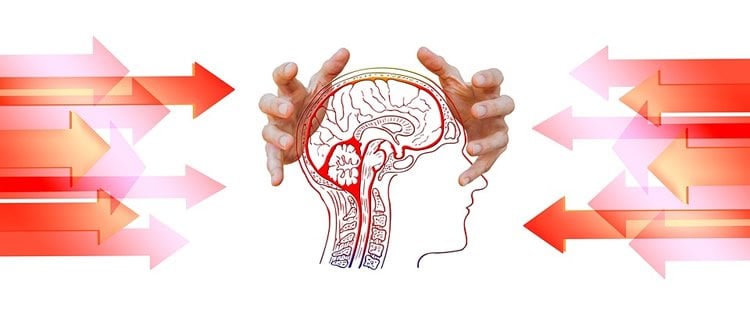Summary: A new study sheds light on ADHD, reporting teens with the disorder fit into one of three specific subgroups with distinct brain impairments and no common abnormalities between them.
Source: Elsevier.
Researchers have found that patients with different types of attention-deficit/hyperactivity disorder (ADHD) have impairments in unique brain systems, indicating that there may not be a one-size-fits-all explanation for the cause of the disorder. Based on performance on behavioral tests, adolescents with ADHD fit into one of three subgroups, where each group demonstrated distinct impairments in the brain with no common abnormalities between them.
The study, published in Biological Psychiatry: Cognitive Neuroscience and Neuroimaging, has the potential to radically reframe how researchers think about ADHD. “This study found evidence that clearly supports the idea that ADHD-diagnosed adolescents are not all the same neurobiologically,” said first author Dr. Michael Stevens, of the Olin Neuropsychiatry Research Center, Hartford, CT, and Yale University. Rather than a single disorder with small variations, the findings suggest that the diagnosis instead encompasses a “constellation” of different types of ADHD in which the brain functions in completely different ways.
The researchers tested 117 adolescents with ADHD to assess different types of impulsive behavior – a typical feature of ADHD. Three distinct groups emerged based on the participants’ performance. One group demonstrated impulsive motor responses during fast-moving visual tasks (a measure of executive function), one group showed a preference for immediate reward, and the third group performed relatively normal on both tasks, compared to 134 non-ADHD adolescents.
“These three ADHD subgroups were otherwise clinically indistinguishable for the most part,” said Dr. Stevens. “Without the specialized cognitive testing, a clinician would have had no way to tell apart the ADHD patients in one subgroup versus another.” Dr. Stevens and colleagues then used functional magnetic resonance imaging (fMRI), a technique that allows researchers to make connections between behavior and brain function, to investigate how these different impulsivity-related test profiles related to brain dysfunction.
“Far from having a core ADHD profile of brain dysfunction, there was not a single fMRI-measured abnormality that could be found in all three ADHD subgroups,” said Dr. Stevens. Instead, each subgroup had dysfunction in different brain regions related to their specific type of behavioral impairment.
“The results of this study highlight that there are different neural systems related to executive functions and reward processing that may contribute independently to the development of ADHD symptoms,” said Dr. Cameron Carter, Editor of Biological Psychiatry: Cognitive Neuroscience and Neuroimaging.

It will take more research to prove that ADHD is a collection of different disorders, but this study provides a big step in that direction. “Ultimately, by being open to the idea that psychiatric disorders like ADHD might be caused by more than one factor, it might be possible to advance our understanding of causes and treatments more rapidly,” said Dr. Stevens.
According to Dr. Carter, the findings suggest that future approaches using clinical assessments to identify the specific type of brain dysfunction contributing to a patient’s symptoms may allow a more targeted approach to treatment. For example, medications that may not appear to work well in a group of ADHD patients as a whole, may be effective for one particular subgroup that arises from a specific causal pathway.
Source: Elsevier
Publisher: Organized by NeuroscienceNews.com.
Image Source: NeuroscienceNews.com image is in the public domain.
Original Research: Abstract for “Functional Neuroimaging Evidence for Distinct Neurobiological Pathways in Attention-Deficit/Hyperactivity Disorder” by Michael C. Stevens, Godfrey D. Pearlson, Vince D. Calhoun, Katie L. Bessette in Biological Psychiatry: Cognitive Neuroscience and Neuroimaging. Published online September 22 2017 doi:10.1016/j.bpsc.2017.09.005
[cbtabs][cbtab title=”MLA”]Elsevier “Brain Imaging Reveals ADHD as a Collection of Different Disorders.” NeuroscienceNews. NeuroscienceNews, 7 November 2017.
<https://neurosciencenews.com/adhd-spectrum-neuroimaging-7893/>.[/cbtab][cbtab title=”APA”]Elsevier (2017, November 7). Brain Imaging Reveals ADHD as a Collection of Different Disorders. NeuroscienceNews. Retrieved November 7, 2017 from https://neurosciencenews.com/adhd-spectrum-neuroimaging-7893/[/cbtab][cbtab title=”Chicago”]Elsevier “Brain Imaging Reveals ADHD as a Collection of Different Disorders.” https://neurosciencenews.com/adhd-spectrum-neuroimaging-7893/ (accessed November 7, 2017).[/cbtab][/cbtabs]
Abstract
Functional Neuroimaging Evidence for Distinct Neurobiological Pathways in Attention-Deficit/Hyperactivity Disorder
Background
A challenge facing clinical neuroscientists is how best to synthesize diverse and sometimes inconsistent evidence for neuropsychological deficits and brain system dysfunction found in psychiatric disorders into models that guide etiological and treatment research. Multiple-pathway models suggest that psychiatric symptoms might arise from pathophysiology in different neural systems. This study tested dual-pathway model predictions for attention-deficit/hyperactivity disorder (ADHD) that reward and executive function cognitive deficits should be related to abnormalities in corresponding functionally specialized neural systems.
Methods
Behavioral inhibition and preference for immediate rewards were assessed in N = 251 adolescent boys and girls ages 12 to 18 diagnosed with DSM-IV combined-subtype ADHD or non-ADHD control subjects. Following taxometric analyses of test performance, the resulting subgroups were compared on a functional magnetic resonance imaging monetary incentive delay task probing reward anticipation and go/no-go task of motor response inhibition.
Results
Three ADHD subgroups were identified consistent with different proposed pathways—ADHD with executive function/motor inhibition deficits, ADHD with both executive and reward deficits, and ADHD with relatively normal test performance. Each cognitive domain mapped to different ADHD brain dysfunction features as expected. However, no brain abnormalities were found common to all ADHD subgroups despite the fact they had nearly identical ADHD-related clinical characteristics.
Conclusions
The results suggest that combined-subtype ADHD is a collection of discrete disorders for which a comparable behavioral end point arises through different neurobiological pathways. The findings raise caution about applying common cause, single-deficit conceptual models to individual ADHD patients and should prompt researchers to consider biologically defined, multifactorial etiological models for other psychiatric diagnoses.
“Functional Neuroimaging Evidence for Distinct Neurobiological Pathways in Attention-Deficit/Hyperactivity Disorder” by Michael C. Stevens, Godfrey D. Pearlson, Vince D. Calhoun, Katie L. Bessette in Biological Psychiatry: Cognitive Neuroscience and Neuroimaging. Published online September 22 2017 doi:10.1016/j.bpsc.2017.09.005







